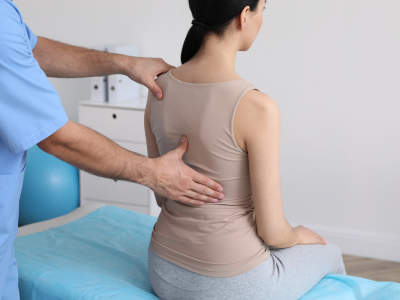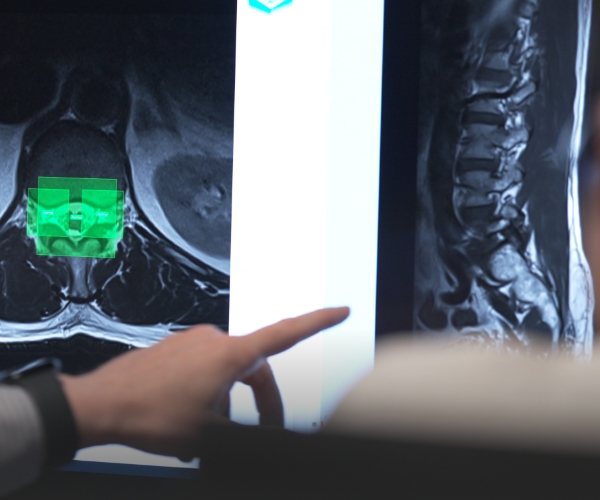Published on 13 December 2022
Don’t ignore the persistent pain in your shoulder – it could be a sign of rotator cuff injury.
Most of us would have felt our shoulders hurt at some point of time in our lives. After all, shoulder pain and aches can be caused by a variety of reasons, such as bad sleeping posture, a strenuous workout, or simply by lifting a heavy object.
In most instances, these muscle aches recover in a matter of days. However, if the pain persists, or if the pain gets progressively worse, then it could be a sign of a more serious injury, particularly to the rotator cuff.
The rotator cuff is a group of four shoulder muscles and tendons that is needed for lifting and rotating of the arm, and is attached to the top part of the upper arm and shoulder blade.
“In daily routine activities, the rotator cuff functions to elevate the arm for all overhead activities such as washing the hair, changing the light bulbs, or in general, reaching for items overhead,” explained Adj Asst Prof Han Fucai, Head of Division & Consultant, Division of Shoulder and Elbow Surgery, Department of Orthopaedic Surgery, Ng Teng Fong General Hospital (NTFGH).
“It also plays an essential role in all sports that require the upper limb, such as basketball, badminton and volleyball.”
Given the pivotal role that the rotator cuff plays in overall arm function, an injury to the muscle group will likely inhibit mobility.
“Initial strains and sprains can progress to partial or complete tears of the rotator cuff,” warned Adj Asst Prof Han. “Therefore, it is key to identify a rotator cuff injury as early as possible and subsequently rehabilitate the injury. The most common symptoms include pain and weakness when lifting the arm (especially above the shoulder level), when rotating the arm (such as reaching around the back), and discomfort when sleeping at night if lying on the affected shoulder.”
How bad can a rotator cuff injury get?
Rotator cuff injuries can vary depending on factors such as the duration, cause, severity, and size of the muscle tear.
Rotator cuff tears can be due to an acute injury or prolonged and repetitive wear and tear. While acute injuries occur suddenly due to circumstances such as a fall, chronic injuries develop over time due to overuse.
“Acute injuries can include falling down on an outstretched arm or sudden heavy lifting beyond what the rotator cuff tendon can handle,” Adj Asst Prof Han said. “Repetitive wear and tear, on the other hand, arises from repeating the same shoulder motions so much that it stresses the rotator cuff. This includes manual jobs and routine house chores.”
The extent of the muscle strain, too, can be a measure of the severity of the rotator cuff injury, as Adj Asst Prof Han elaborated, “Tendinosis refers to a strain or degeneration of the tendon, a precursor to getting a tendon tear. Partial tear of the tendon means that only a portion of the rotator cuff tendon is torn, but the rest of it remains functional.”
Prevention is better than cure
There are steps you can take to reduce the risk of sustaining a rotator cuff injury. Such measures include:
● Strengthening and stretching exercises to improve flexibility of the relevant muscles
● Adequate warming up of the shoulder and arm muscles prior to sporting activities that require heavy use of the shoulders, such as racquet sports and weightlifting
● Take sufficient rest between strenuous activities
● Do not ignore pain. You should stop performing any activities that trigger pain, and seek medical treatment if the shoulder pain persists.
The road to recovery
The treatment options for a rotator cuff injury varies from patient to patient, depending on the severity of the injury. Treatment options include:
● Physiotherapy, activity modifications, analgesia, and anti-inflammatories
● Injections: Steroid or platelet rich plasma (PRP)
● Surgery: Arthroscopic (key-hole) rotator cuff repair
Generally, non-operative treatments are attempted for three to six months depending on the severity of the injury.
Beyond seeking medical attention, rehabilitating an injured muscle at home also goes hand-in-hand with the recovery process. Here’s what you can do to manage your pain:
● Take oral medicine such as painkillers or anti-inflammatories to help reduce pain
● Avoid placing extra stress on the shoulder that can aggravate the injury
● Adopt good posture to maintain shoulder blade in the right position
● Avoid carrying heavy bags over the affected shoulder
● Avoid repetitive overhead loading of the affected shoulder
In consultation with Adj Asst Prof Han Fucai, Head of Division & Consultant, Division of Shoulder & Elbow Surgery, Department of Orthopaedic Surgery, NTFGH




